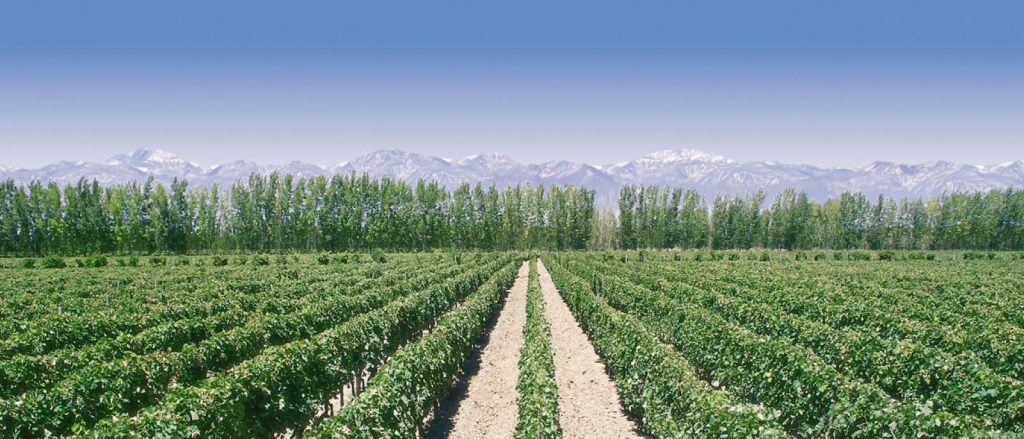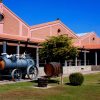San Martin, Rivadavia and Junin are not the origins of Argentine wine as we have been led to believe. Wine writers rarely dedicate their articles to their vineyards and history; even the industry has very little to say about this corner of Mendoza. However, these and other departments of Mendoza are where 65% of the wine of the province is to be found, and today many are more than willing to put them once again among the highlights of the country.
A future with history
During the last century, the wine industry in Argentina established itself with wine obtained from these vineyards. Many of the most well known labels were produced there, and until the turn of the century they were very much in the spotlight. “The search for cooler climates in order to produce fresher and lighter wines led us to focus on the mountains, but there is much to learn from the vineyards of the East,” said Mauricio Lorca, one of the winemakers returning to trust in the potential of this region.
During the 1970s and 1980s, the major wineries sourced the fruits for their wines there. In those times the main goal was to to meet the strong domestic demand. When the industry decided to pay more attention to quality and the development of the domestic markets, the East was somehow left out. But it never lost its vital role as a producer of quality grapes.
Of the 160,000 hectares covered with vineyards in Mendoza, just over half are concentrated in the East. Unlike the vineyards of the regions in vogue, here the vineyards are located between 600 and 800 meters above the sandy, clayey soils of the desert. Crops are only possible here thanks to irrigation, because their habitat is dry and the average temperature is high due to an omnipresent sun which subjects the vines to oppressive days.
That´s why in the East all the strains reach maturity and the productivity per hectare is higher than in colder regions. “The area is good for the production of wines for daily consumption, but also for other high-end wines, with vineyards near rivers or influenced by the cold air coming down from the mountains” adds the winemaker Hector Durigutti, a fanatic of the Bonarda in the area.
Today, with the wealth of knowledge accumulated over the past twenty years, agronomists and winemakers are reducing yields in the region and advancing harvest times. Thus, the wines obtained are showing a modern, lively expression that are full of surprises.
Beyond the price / quality
In this terroir, many strains have excellent results. This potential means a large number of labels are sold at very competitive prices all over the world. But today the challenge is not only to have wines at good prices, but also a quality that consumers can’t find in other parts of the world.
Along with the historically prominent strains, such as Bonarda, Tempranillo, Sangiovese, Chenin Blanc, Semillon, Muscat and Criolla, today we can add Malbec, Chardonnay and Viognier.
Either as varietals or blends, in recent years the region has offered a quality upgrade, thus attracting winemakers devoted to other areas. “In Rivadavia, we are developing fresh wines of intense fruit and soft tannins. These are wines with an ageing potential of three to five years and an excellent price / quality ratio. Consumers are quickly discovering that these wines are really good, “says Mauricio Lorca regarding Lujan de Cuyo.
The mecca of Bonarda
To define what the ideal strain for this warm region is, winemakers and agronomists are already investigating the soil and other factors of this terroir. Early studies have shown that Bonarda is the most appropriate and representative strain. “We work on different selections and clones of Bonarda to understand how to achieve the best results for this varietal in Rivadavia, San Martin and Santa Rosa. In all these regions we get great wines, “says Alejandro Vigil, chief winemaker at Catena Zapata, and now in charge of the exploration of numerous vineyards of the East of Mendoza.
For its part, the department of San Martin is considered the Capital of Bonarda, since it boasts an area of 3,850 hectares dedicated to this varietal, equivalent to 20% of the national total. Historically, like Rivadavia, it was the most sought after by wineries wanting it as a varietal. “These Bonardas bring lots of fruit and lively, juicy palates, and are always easy to drink,” adds Durigutti who uses grapes from Rivadavia in his most awarded varietal.
And these experts can be checked out on the market, where a wide range of Bonarda from the East stands out on the shelves. From the smart buy of Alamos and Durigutti Clasico, to those who push it to the high end. Including Gran Dante, from Dante Robino, or El Enemigo by Alejandro Vigil.
Uncovering history
A few years ago, the winery Catena Zapata began identifying plots in different corners of this area, where there is much genetic material to work with. “we wanted to make sure that the great Argentine wines and vineyards are here to stay. We are now recovering its prestige, “says Nicolas Catena. In his bodega, the team of the Catena Institute of Wine is currently researching the historic vineyards of Chenin Blanc, Semillon, Syrah and native strains whose wines will be on the market at any moment. According to his principal winemaker, “The Uco Valley dazzled us with the quality of its wines, but it is time to recover the history of this region and tell the world about its great wines”.
Once again, the future of Argentine wine feeds on its history and, this time, does it with the intention of recovering the most important stronghold of the industry. A challenge that will prove that the country can make something for all tastes!
Photo: http://www.argentina.travel/



